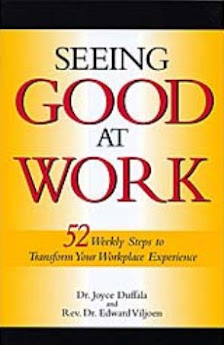By Franklin Privette (used with permission)
It was comforting to read in the newspapers last week that the Gulf of Mexico oil well that had been releasing oil into the gulf since April 20, 2010 had finally been successfully capped. Although this was the largest oil spill in United States history, oil spills and leaks are not unusual. There have been several in the U.S. alone in which millions of gallons of oil have been released into ocean bays. Despite the many safeguards used by the petroleum companies, there is no good reason to expect that there will not continue to be significant spills and leaks in the future.
This is only one side effect of our planet’s hunger for energy produced from fossil fuels. The damages to life on our planet (including human life) resulting from our increasing energy demands and use are enormous. Of course, oil is not the only fuel that comes with threats. Coal mining endangers human lives and creates erosion on the landscape.
“Humankind has not woven the web of life. We are but one thread within it. Whatever we do to the web,
we do to ourselves. All things are bound together. All things connect.” This quote from Chief Seattle, Chief of the Suquamish, (1 ) is a reminder that a disaster, such as a major oil spill, in one part of the planet affects the entire planet. It is interesting to note that within this intricately woven web of life are species of bacteria that were brought to the rescue this summer for digesting and eliminating the oil slicks in the Gulf (2). Also within the web were the nitrogen-fixing and other kinds of bacteria that made possible the growth of plants and animals millions of years ago. These plants and animals eventually became the fossil fuels on which we are so dependent today. There are innumerable micro webs within the larger web of life that, though invisible to us, are as vulnerable as those webs including visible life forms.
Perhaps it is time for a major shift in thinking about energy.
There is a lesson for us to be learned from the way a major environmental problem in New York City, in the 1890’s, was solved. In those days horses were used to pull buses, wagons, carriages, etc. In New York, in 1900, the population of 100,000 horses produced 2.5 million pounds of manure per day. There were similar problems in all major cities. No solutions were in sight and there was only the prospect of it continuing to worsen. Add to this the cost of feeding and caring for the horses.
Of course, this great crisis vanished when millions of horses were replaced by motor vehicles (3). For several years this seemed to be the ideal solution. However, now we are faced with problems related to fossil fuel consumption, its byproducts, and ways of accessing it.
“No problem can be solved from the same level of consciousness that created it.” This is a well known quote of Albert Einstein. It certainly was true of the horse manure problem and I believe it is applicable to dealing with our present energy problems.
I believe we can reduce further damage to our planet by turning to other sources of energy—sources that are nonpolluting and essentially inexhaustible.
Energy from wind and flowing water has be harnessed and used for centuries. More recently both of these have been used for producing electricity.
We have been relying on solar energy indirectly since early in the history of life on earth. Light is the energy source for photosynthesis, the process that powers plant growth, from algae to the largest trees. A very clear example of this is in growing corn to produce ethanol that can be used in vehicles in place of gasoline. The growth cycle of corn from seed to harvest is less than six months. There are now far more efficient systems for transforming the sun’s energy. A wide range of solar cells and solar panels are being used on a small scale.
A major energy source for coastal areas is ocean wave and tidal energy. In some parts of the world this is currently being used to produce electricity.
Geothermal is still another energy source that is being used to some degree and has great potential.
Any time energy passes through one or more living systems a significant percentage of the original is released back into the atmosphere (“lost”). By using the energy from the source directly, the energy is used more efficiently.
A lot of the technology for using clean, abundantly available energy sources is already available. It is reassuring that laws have already been passed to require switching to these sources.
It seems that the major obstacle to moving away from fossil fuel use is money. When it becomes more cost effective to use alternate sources, we will see our reliance on fossil fuels decline rapidly and our atmosphere will be cleaner and healthier as a side benefit.
I do not want to suggest that the methods of bringing forth clean, plentiful and efficient energy are limited to the ones I have mentioned or to any others that may be currently known. In Religious Science we know that, because “Principle is not bound by precedent” there are ways of providing usable energy that may be beyond the present level human imagination. There is an infinite supply of energy in the universe. The infinite Intelligence and Wisdom of the One Divine Spirit, that we usually call “God”, is fully available to those human minds that are receptive to it. Just as they have been since the “dawn of man”, new laws will continue to be discovered and creatively used to reveal and actualize previously unknown possibilities.
A part of the United Centers for Spiritual Living Global Heart Vision is “a world that works for everyone”. There is no limit to the means by which this Vision unfolds into actuality.
A hundred and ten years from now people will probably not understand how we could ever have allowed oil to pollute our bodies of water, just as we are far removed from the big city horse manure problem of 1900.
References
1. Quoted by Barbara Leger in Science of Mind magazine, September 2010, p 37.
2. Megan Stoddard,, “Study shows bacteria have eaten giant Gulf oil plume”, http://www.helium.com/items/ 1942622 (accessed September 6, 2010).
3. Stephen Davies, “The Great Horse-Manure Crisis of 1894”, http://www.the freemanonline.org/columns/our-economic-past (accessed September 6, 2010).
Welcome to my blog * thoughts and things * poetry, pictures * ideas * opinions * kindness * video * stay and read a while.
Subscribe to:
Post Comments (Atom)
Popular Posts
-
This April, we focus on the power of gentleness and its impact on our relationships and inner well-being. I’ve recently been exploring how t...
-
Blogging on line has become easy and accessible to everyone through a growing number of free online services availalbe to choose from. Blog...
-
I was minding my own business on this, the second day of my pre-Christmas vacation, taking a voluntary break from news feeds and focu...
-
There may be things I have to correct in my behavior. There may be social issues I have to attend to. There may be injustices I speak up abo...
-
Our founder, Ernest Holmes, believed the great lesson that Life is trying to teach us is that we are all rooted in God, and each is an ind...
-
This Sunday, we will reflect on the season we find ourselves in. As the natural world around us awakens with new life , we, too, are invited...
-
Engage, Learn, and Make a Difference In a world brimming with complexities, it's crucial not to shy away from the challenge of understan...
-
As we stand on the threshold of 2024, I find myself contemplating the journey ahead. It's tempting to say it's going to be a tough y...
-
Monthly Context: Carl Jung said, “Who looks outside, dreams; who looks inside, awakens.” The Soul’s call is this deeply intimate, challengin...
-
This week's topic is "Tell Me Something Good," where we'll delve into the essence of good news and how it shapes our spiri...
5 most recently updated from the blogs I'm following
Followers
Science of Mind and Spirit For Begnners
"This wonderful book guides any individual to understand Science of Mind with ease and grace. It is a simple and beautiful presentation of the Spiritual Principles Science of Mind teaches. I highly recommend this book to students, licensed Practitioners and ministers. Blessings to Rev Edward." ~ Johan Gonzalez RScP. Science of Mind and Spirit for Beginners: Four Chapters in Simplified Prose, paraphrased by Edward VIljoen
Seeing Good At Work

I have been through the book three times over three years, and am starting it again. This is not because the material in the book is not working, but because it is working so well! The weekly lessons keep me on track and focused on what is actually true and important, and help me experience more good in every area of my life. LS
Ezine.com
Designed By Templateism | Seo Blogger Templates








.jpg)













No comments:
Post a Comment